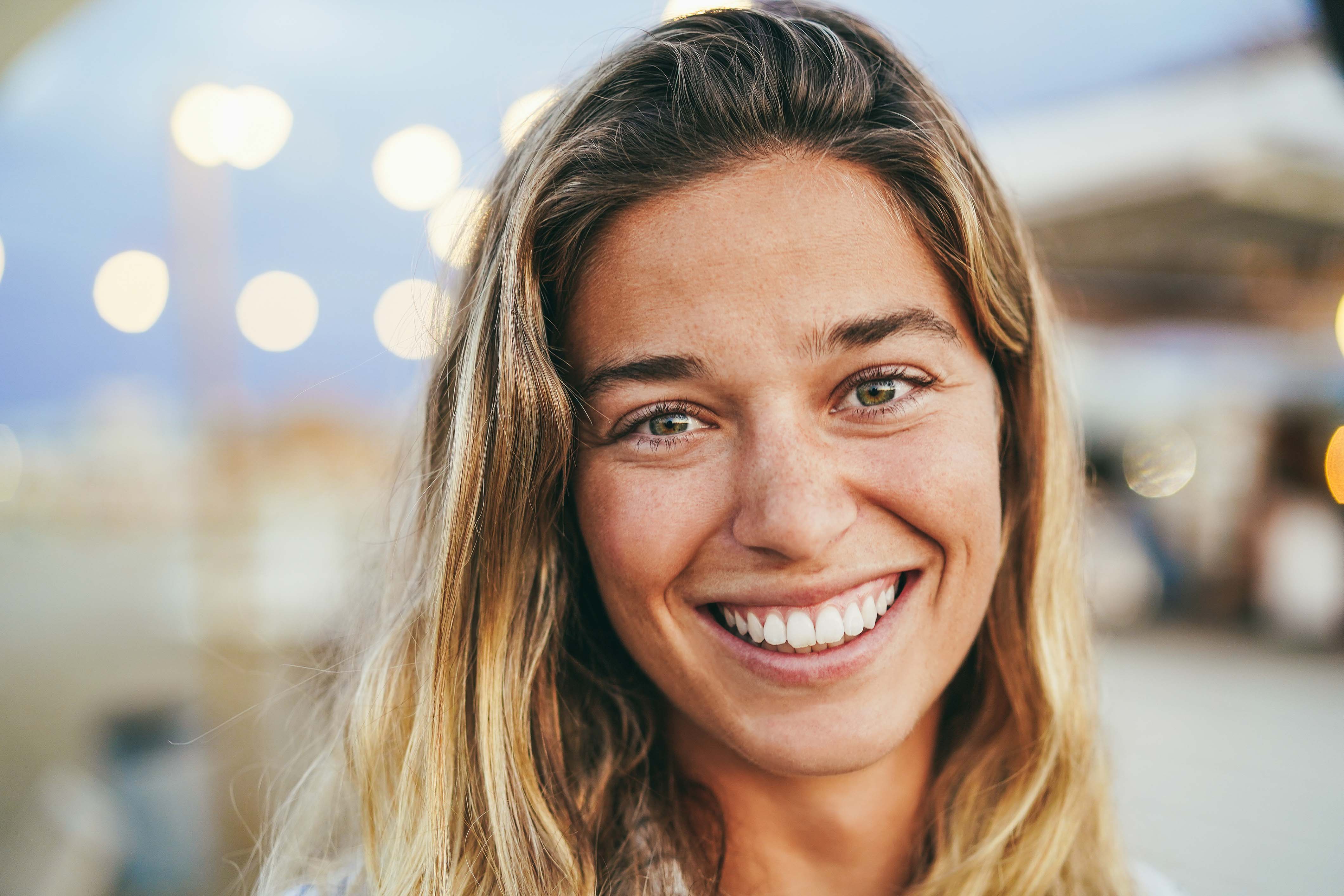
AI
Boost Your ROI: Leveraging AI In Google & Meta Ads For Cosmetics Brands
Boost your ROI with AI-powered Google & Meta Ads for your cosmetics brand. Discover how AI optimizes targeting, bidding, and creatives to cut costs and increase conversions. Stay ahead in the beauty industry with smarter, data-driven advertising.
Published at 01 March, 2025
Want to know us better?
Subscribe to our LinkedIn to never miss an update
The digital world has never been more competitive for the cosmetics industry. Brands have to fight for visibility and make sure their products stand out, which is easier said than done. It becomes increasingly difficult to cut through the noise as new beauty products are released every single day.
Brands have started shifting towards digital advertising because traditional methods are no longer proving effective. Without precise targeting, the ad spend is reaching the sky while ROI stays underground. To dominate a crowded market, brands need to employ tried-and-tested strategies, rather than a single approach.
With AI-powered features, cosmetic brands and other eCommerce industries can now target highly interested customers and cut back on ad expenses.
Google and Meta have integrated AI technology for brands and business owners to boost their campaign results by using AI’s predictive capabilities to generate ad creatives, adjust targeting, and even fine-tune budgets for the best ROI.
Understanding how AI works in Google Ads and Meta Ads is the first step toward a more effective advertising strategy.
This article will take you through the challenges of digital advertising in the cosmetics industry and how AI-powered strategies can lead to better results.
Understanding AI In Digital Advertising
Running ads today isn’t as simple as setting a budget and hoping for the best. With millions of brands competing for attention, getting in front of the right audience at the right time requires more than just guesswork.
That’s where AI technology comes in. Platforms like Google and Meta use advanced systems to analyze user behavior, predict what customers are interested in, and adjust ads in real time for better results.
Instead of manually selecting audiences or tweaking bids throughout the day, brands can rely on automated tools that do the heavy lifting. These tools study patterns like:
- Which products shoppers click on?
- How long do they spend on certain pages?
- What actions do they take before making a purchase?
With this information, you can optimize your ads on the spot to ensure they reach people who are most likely to buy.
Beyond targeting, AI also helps with creative decisions. It can suggest better headlines, images, and descriptions based on what has worked in the past.
These tools help brands by removing the guessing game so powerful that specifying messages becomes simple. The big question is how to maximize them? The answers are these tools themselves, as they enable brands to get rid of ineffective ads and achieve strong customer loyalty.
AI-Powered Solutions For Google Ads
Google Ads has become more than just a pay-per-click platform. With built-in automation, it continuously learns and adapts to user behavior, making it easier for brands to reach the right customers while maximizing their ad spend.
For cosmetics brands, where trends change fast and competition is fierce, using these smart tools can make all the difference.
Smart Bidding For Better Results
Managing bids manually can be a pain in your head, especially when ad costs fluctuate throughout the day. Google’s Smart Bidding takes care of this by automatically adjusting bids in real time based on the likelihood of a conversion.
It takes factors like search intent, user location, device type, and even the time of day into the account and shows ads to people who are more likely to take action.
Performance Max Campaigns For Multi-Channel Reach
Google’s Performance Max campaigns run ads across Search, YouTube, Display, Gmail, and Maps all within a single campaign. The system analyzes which placements drive the best results and shifts the budget accordingly.
For cosmetics brands, this means a wider reach without the trouble of managing multiple ad types separately.
Whether a potential customer is searching for “best long-lasting lipstick” on Google or watching a beauty tutorial on YouTube, the right ad is placed in front of them at the perfect moment.
Audience Targeting With Predictive Insights
Google’s AI-powered audience targeting studies past customer behavior and builds detailed audience profiles based on interests, purchase history, and online activity. Lookalike audiences help brands find new potential buyers who share similarities with existing customers, increasing the chances of engagement.
Optimizing Ad Creatives For Maximum Engagement
A great ad isn’t just about the right audience, it’s about the message. Google Ads uses machine learning to test different combinations of headlines, descriptions, and images to determine which versions perform best.
Instead of running a single static ad, brands can provide multiple variations, and the system will automatically display the most effective one.
This helps cosmetic brands craft their messaging based on what resonates with their audience, whether it’s highlighting cruelty-free ingredients, showcasing a new shade range, or promoting a limited-time offer.
AI-Powered Solutions For Meta Ads
Meta Ads have proved that they are more than just a way to boost posts or run promotions. With the right approach, they can turn casual browsers into loyal customers. What makes them so effective is their ability to personalize the shopping experience in real time.
Smarter Targeting With AI-Driven Audiences
Meta’s AI-powered targeting eliminates the guesswork by analyzing user behavior and identifying people who are most likely to be interested in beauty products. Instead of relying on broad demographics, brands can target audiences based on interests, past interactions, and even shopping habits.
If a brand has a loyal customer base of skincare enthusiasts, Meta can automatically identify and target similar users, increasing the chances of conversions.
Since these audiences are built using real data, they help brands attract high-intent shoppers rather than wasting ad spend on people who may never make a purchase.
Dynamic Ads That Adapt to Shoppers
People don’t always buy a product the first time they see it. They might browse a website, check out a few items, and then leave without completing a purchase.
Meta’s Dynamic Ads help bring those potential customers back by automatically showing them the exact products they viewed.
These ads don’t just remind shoppers about what they left behind, they also suggest similar or complementary products based on browsing history.
Automated Budget Allocation For Higher ROI
Instead of messing with the budget for different campaigns, Meta’s AI-powered spending system monitors ad sets endlessly and allocates funds for the ads that have amped up customer engagement and conversions the most.
Enhancing Ad Creatives With AI-Powered Insights
Meta’s AI tools analyze various sets and pay attention to engagement patterns to identify the most effective visuals, headlines, or calls-to-action.
From considering before-and-after results to using influencer content, AI helps streamline everything at once to make the ad more engaging and increase sales.
Common Mistakes Brands Make When Using AI in Ads
While AI-powered advertising offers incredible advantages, many brands fail to see strong results due to common mistakes. Understanding these pitfalls can help cosmetics brands avoid unnecessary spending and optimize their campaigns effectively.
1. Relying Solely On AI Without Human Oversight
AI can analyze data and make automated decisions, but it lacks the human touch needed for branding and messaging. Some brands assume AI can run ads without any adjustments, leading to ads that feel impersonal or misaligned with the brand’s voice. The best results come from combining AI-driven insights with strategic human input.
2. Failing To Provide Enough Data For AI To Learn
AI thrives on high-quality data. Brands that don’t feed the system enough information—such as past campaign performance, audience insights, or customer behavior—often struggle to see improvements. The more relevant data AI has to analyze, the better it can optimize ads.
3. Ignoring Ad Creative Optimization
AI in Google & Meta can help fine-tune targeting and bidding, but a poorly designed ad won’t convert no matter how advanced the technology is. Brands that overlook the importance of high-quality visuals, compelling messaging, and engaging formats may see lower engagement rates, even with AI-powered campaigns.
4. Failing To Track The Right Metrics
Some brands focus on surface-level metrics like impressions and clicks without considering deeper performance indicators. While AI can help drive traffic, it’s important to measure whether that traffic is translating into actual sales.
For instance, a brand might see a high click-through rate (CTR) on its AI-powered ads and assume the campaign is successful. But if those clicks aren’t leading to conversions, something isn’t working. AI may be optimizing for engagement rather than sales, leading to wasted ad spend.
The Fix: Track key performance indicators (KPIs) that reflect actual business growth, such as ROAS, conversion rates, and customer acquisition costs. Adjust AI settings to focus on sales-driven outcomes rather than just engagement.
Final Words
AI-powered advertising provides a smarter, more efficient way to navigate marketing challenges by optimizing campaigns in real time, personalizing the shopping experience, and maximizing every marketing dollar.
Google and Meta have integrated AI-driven solutions that take the guesswork out of digital advertising and give you real results. From automated bidding and audience targeting to dynamic ad creatives and budget optimization, these tools help brands connect with high-intent shoppers at the perfect moment.
But AI isn’t just about automation, it’s about making better, data-backed decisions that lead to stronger customer engagement and higher conversions.
Success with AI-driven ads comes down to strategy. Brands that set clear goals, monitor performance, and combine AI insights with creative storytelling will see the best results. While AI can enhance efficiency, human creativity and brand identity remain key in building meaningful customer relationships.
Karmic Studio has expert individuals on board that can help you double your profits while minimizing your ad spend.
Table of Contents
Recent articles from the team

AI
Boost Your ROI: Leveraging AI In Google & Meta Ads For Cosmetics Brands
Boost your ROI with AI-powered Google & Meta Ads for your cosmetics brand. Discover how AI optimizes targeting, bidding, and creatives to cut costs and increase conversions. Stay ahead in the beauty industry with smarter, data-driven advertising.
01 March, 2025

Digital Marketing
How to Calculate Your Ad Budget: Key Metrics & Best Methods
The most important element to make a successful marketing strategy is effective ad budgeting. Whether you have a well-established brand and want to refine your ad spending or you have a new e-commerce store, you must have a clear and well-calculated budget.
06 Feb, 2025

Conversion Rate Optimisation
Optimizing E-commerce Platforms for Health and Wellness Product Conversions
Whether you are involved in selling nutritional supplements, cosmetics or specialized wellness gadgets the tips we share here will help you build your confidence and refine your approaches. By the end of this blog you will be more equipped with knowledge that will you with the optimization of your e-commerce platform for higher conversions and better visibility.
29 Jan, 2025

Join us in making a difference
We've already planted 2,000 trees with our own contributions, and will look for any other ways we can give help the planet or organisations in the future such as working with charities & NGO's, schedule a call with us below, and lets make a change together.